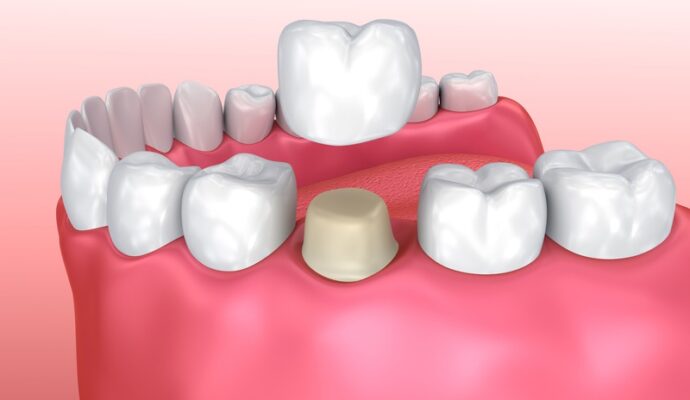Experiencing dental pain after a procedure is a common concern, often leaving patients searching for effective ways to ease discomfort and return to normal activities. Managing this pain is not only about physical relief but also about gaining peace of mind during the recovery process. This article explores practical methods to help manage dental pain and offers strategies to encourage a smoother healing journey with sensitivity and reassurance.
Practical Pain Relief Methods
Minimizing discomfort effectively requires a combination of tried-and-true methods tailored to individual needs. Below are some approaches that have been widely recommended:
-
Follow Dentist Instructions – Adhering strictly to the post-procedure instructions provided by the dentist is crucial. This ensures the best outcome and helps prevent complications.
-
Use Pain Relievers Wisely – Over-the-counter medications such as ibuprofen or acetaminophen can provide relief. Be sure to use them as directed and consult the dentist if stronger medication might be necessary.
-
Apply Cold Compresses – Using an ice pack can significantly reduce swelling and numb the area, bringing relief from soreness.
-
Eat Soft Foods – A soft diet minimizes irritation to the affected area. Incorporating foods like soups, yogurts, and smoothies can be both nourishing and gentle on the mouth.
-
Maintain Gentle Oral Hygiene – Carefully brushing and flossing can prevent infection. Using a saline rinse can also promote healing without the harshness of regular mouthwash.
Exploring Alternative Relief Options
For those exploring options beyond traditional methods, several natural and holistic approaches can complement standard care:
-
Clove Oil Application – Known for its natural numbing properties, clove oil can be applied directly to the sore area with a cotton ball for quick relief.
-
Saltwater Rinses – A simple saltwater rinse can help reduce inflammation and keep the mouth clean, promoting faster healing.
-
Stay Hydrated – Drinking sufficient water supports overall oral health and can help speed up recovery.
-
Aromatherapy – Calming scents like lavender can have a soothing effect, helping to alleviate tension and discomfort.
Understanding Dental Procedure Types
The type of dental procedure plays a significant role in the level of pain experienced afterward. Routine cleanings may cause mild discomfort, while more intensive procedures like extractions or implants could require a more robust pain management plan. It’s important to have realistic expectations and to communicate with the dentist about concerns. For individuals undergoing complex dental work, exploring pain management options with professionals, particularly experienced dentists in the area, can offer tailored advice. A Daytona Beach dentist, for example, might provide a detailed recovery plan based on specific needs, ensuring a comfortable healing journey.
Managing Swelling and Inflammation
Swelling is a natural response after a dental procedure, often causing discomfort. Here are ways to address it effectively:
-
Use Cold Compresses – Apply them consistently but avoid direct contact with the skin to prevent irritation.
-
Elevate the Head – Keeping the head elevated, especially while sleeping, can help prevent excessive blood flow to the affected area, reducing swelling.
-
Avoid Strenuous Activity – Limiting physical exertion allows the body to focus energy on healing, minimizing swelling.
Dental experts, such as a dentist in Palm Coast, can provide further strategies that cater to individual circumstances, ensuring clients receive personalized attention during their recovery.
When to Seek Professional Help
Monitoring symptoms is key. While some discomfort is normal, certain signs indicate a need for professional evaluation:
-
Severe, persistent pain that doesn’t ease with medication
-
Signs of infection, including fever or discharge
-
Uncontrollable or excessive bleeding
-
Allergic reactions to prescribed medications
If any of these symptoms occur, contacting a dentist Deland, can provide the necessary intervention to address complications and keep recovery on track.
Helpful Tips for a Smooth Recovery
Enhancing the recovery experience involves more than just tackling pain; consider these additional tips:
-
Avoid Harmful Substances – Smoking and alcohol can impede healing, so it’s best to avoid them.
-
Eat Nutrient-Rich Foods – Opt for foods high in vitamins and minerals to support the body’s healing process.
-
Keep Stress at Bay – Stress can exacerbate discomfort, so finding calming activities or practices to enhance relaxation is beneficial.
-
Open Communication – Regularly updating the dental care provider about any concerns or unexpected issues ensures that advice can be tailored and timely.
With these strategies, managing dental pain after procedures becomes more intuitive, setting the groundwork for a swift and successful recovery. The journey through discomfort doesn’t have to be daunting when equipped with knowledge and prepared for the challenges. By addressing concerns with sensitivity and providing actionable advice, patients gain confidence, knowing a return to comfort is within reach.
Closing Remarks
Effectively managing dental pain after procedures involves a mix of proven methods, alternative options, and professional guidance. Adopting an approach that considers all aspects of recovery, from pain relief to emotional well-being, is crucial. By staying informed and proactive, individuals can enjoy a more comfortable recovery experience. Seeking support from regional dental experts, when needed, ensures that care is personalized, helping patients navigate healing with greater ease and understanding.




